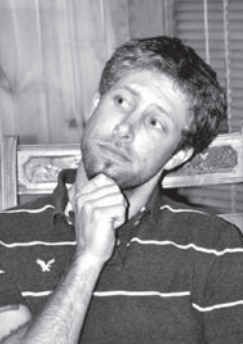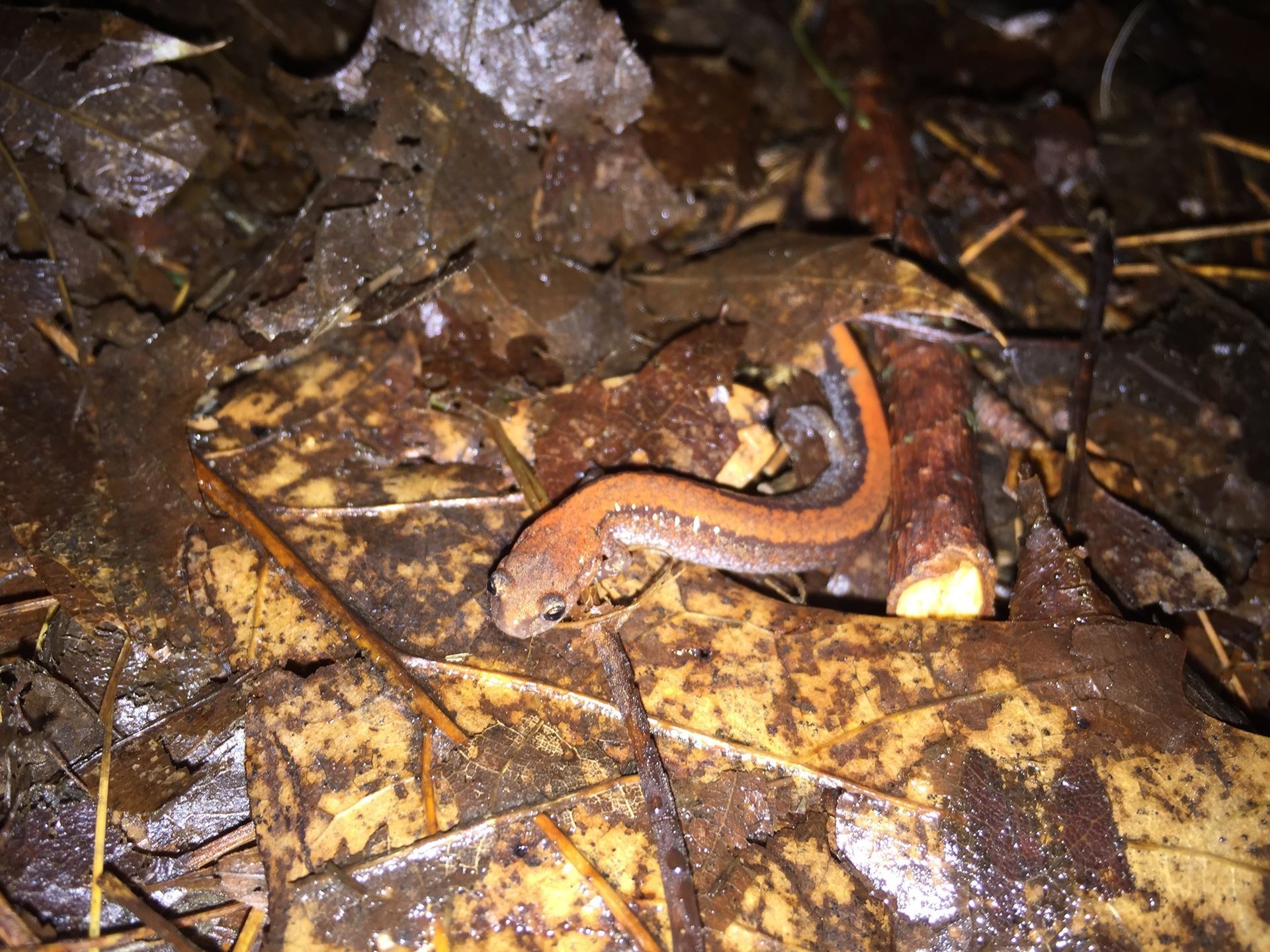 Biologist Nathan Mineo
Biologist Nathan Mineo
Did You Know...?
Spotted Salamanders can NOT Freeze Solid
...and Red-backed Salamanders do NOT have Lungs
Written by Nathan Mineo
Reprinted from the 2024 Cape Ann Vernal Pond Team Newsletter
Photograph by Cheryl Briscoe
Did You Know that spotted salamanders can NOT freeze solid? That makes life a little more challenging for a terrestrial amphibian that lives in a temperate climate with below freezing temperatures in the winter. It means that spotted salamanders must overwinter below the frost layer so they don’t succumb to the deep freeze of winter. And that’s just what they do. Spotted salamanders, which primarily live underground anyway, find burrows or crevices in rocks (like those at Stillington Pond in Ravenswood Park) that go deep underground and just hang out there for the winter in an extremely low metabolic state called brumation.
You may be aware that some of our local amphibians DO freeze solid in the winter. Many moons ago I wrote about the wood frog’s amazing ability to freeze solid and described how it’s able to do so without dying. Like wood frogs, gray tree frogs and spring peepers overwinter in the leaf litter above the frost layer and freeze during the winter as well.
Admittedly, this information isn’t the most exciting and interesting. However, when researching the overwintering behavior of spotted salamanders, I discovered something I didn’t know that I found far more interesting and exciting. Did you know that red-backed salamanders do not have lungs?!
 All the salamanders in the Plethodontidae family lack lungs. Some species are fully aquatic, while others, like our well known red-backed salamander, are entirely terrestrial – even laying their eggs on land. Plethodontids have lots of blood vessels in their skin, much more than lunged salamanders, such as the spotted salamander. It is through the skin that oxygen diffuses into the blood and carbon dioxide diffuses out. In other words, their skin acts like their lungs!
All the salamanders in the Plethodontidae family lack lungs. Some species are fully aquatic, while others, like our well known red-backed salamander, are entirely terrestrial – even laying their eggs on land. Plethodontids have lots of blood vessels in their skin, much more than lunged salamanders, such as the spotted salamander. It is through the skin that oxygen diffuses into the blood and carbon dioxide diffuses out. In other words, their skin acts like their lungs!
Red-backed salamander on Nighttime Vernal Pond Field Trip
Photo by Victoria Rolf
Gas exchange also occurs in something called the buccopharyngeal membrane, located in the back of the throat. During development, this membrane ruptures connecting the mouth to the rest of the digestive tract. In amphibians like the red-backed salamander, the remaining tissue of the buccopharyngeal membrane is loaded with capillaries and accounts for a non-insignificant amount of gas exchange.
Between their skin and their buccopharyngeal tissue, Plethodontids can breathe both on land AND fully submerged in water – something that an organism with only lungs or only gills would find impossible. So take care when holding red-backed salamanders, as they breathe with their skin.